Amherst County Genealogy Records, Wills, Estates, Marriages
Amherst County was created in 1761 from Albemarle County. Amherst is the county seat and was named for Sir Jeffrey Amherst, who was acclaimed as the “Conqueror of Canada”. Although named Governor of Virginia, he never came to the colony. Clifford, incorporated as Cabellsburg in 1785 and later known as New Glasgow, was for a short time the county seat. The county seat is Lynchburg.
Digital Images of Wills 1761 to 1780 and 1780 to 1786
Names are not provided due to space.
Digital Images of Wills 1810-1831
- Alcock, Richard
- Crawford, John
- Knight, William
- Norvel, Spencer
- Rucker, Benjamin
Digital Images of Wills 1832-1897
- Anderson, James
- Cabell, Paul
- Camden, John
- Higginbotham, Jesse
- Higginbotham, Mica
- London, Girzah
- Miles, Benjamin
- Ogden, Allison
- Pendleton, James
- Pleasants, George
- Sale, Cornelius
- Seay, Elizabeth
- Sheehan, Samuel
- Taliaferro, James
- Tinsley, Chapman
- Waller, William Macon
- Whitehead, Virginia
Miscellaneous Wills
- Amherst Will abstracts 1762-1782
- Henry, Sarah, LWT (transcript)
Marriages
- Amherst County Marriages, 1753 to 1783
- Amherst County Marriages, 1763 to 1852
Traced genealogies and family histories of Amherst County are available to Members !
| Franklin | Garland | Norvell | Penn | Stovall |
The Bear Mountain Indian School
Bear Mountain Indian Mission School was used by the Monacan tribe since about 1868 when a parcel of land was donated as a meeting place for the Indians. For a long while, churches and schools were not provided for Indians and a wooden arbor served as the meeting place. However, the local ministers began providing services under the arbor and it was not long afterward that a log building was constructed large enough for about 350 people. Later on, the building became the Indian Mission School at the foot of Bear Mountain. The school building was built in 1868 and is a single-story, one-room, horizontal log building. In 1908, a frame addition was built and during the 1930s it was a plain frame building sheathed in weatherboard.
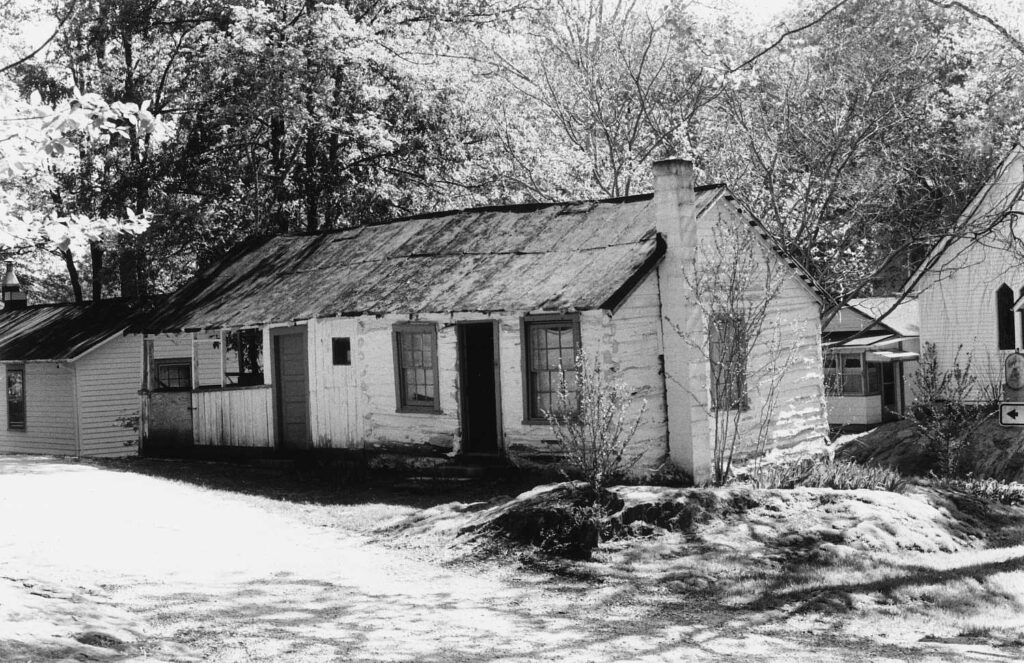
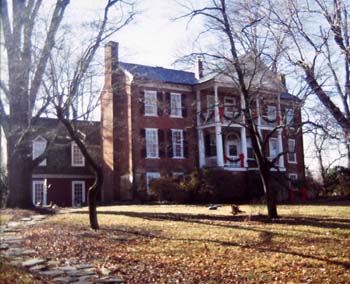
Edgewood House
Edgewood house was built in 1818 by Arthur B. Davies, a local attorney, and Amherst County Clerk. Also known as the Higginbotham House, it is located at 138 Garland Avenue in Amherst, Virginia. The house itself is a T-plan brick dwelling in the Greek Revival style, consisting of two stories and seven bays. It features a two-story pedimented wooden portico. In 1972, additions were made to the house in the Federal style, retaining most of the original woodwork and mantels. The building housed the Higginbotham Academy from 1851 to 1860, as well as the local Masonic Hall, and also served as a meeting place for a Methodist congregation.
Galts Mill
Galt’s Mill was built in 1813 as a mill complex in Madison Heights and is a two-story brick structure. Other additions to the complex were gradually added, including the Aqueduct, Train Bridge, Railroad, Boathouse, Home House, Miller House, and Millrace and Dam Ruins. Originally, it was over 5 stories high, but during the 1950s lowered its present height. It remained in operation until about 1956. Today, there remain several abandoned houses and structures. The mill sits at the mouth of Stovall Creek (now Beck Creek) on the James River on land patented to George Stovall during the 18th century. The Stovall family also operated a ferry across the James River beginning in 1755. In 1785, the Stovall family sold 340 acres along the river to William Galt who went on to acquire some 1800 acres of land along the river for his mill. William Galt (1753-1825) came to Virginia from Scotland as an itinerant peddler who traveled up and down the James River and built a large complex on the James River and Kanawha Canal. Additionally, the Richmond and Alleghany Railroad line made its stop in the village which had emerged around the mill. At his death, Galt was considered one of the wealthiest men in Virginia.
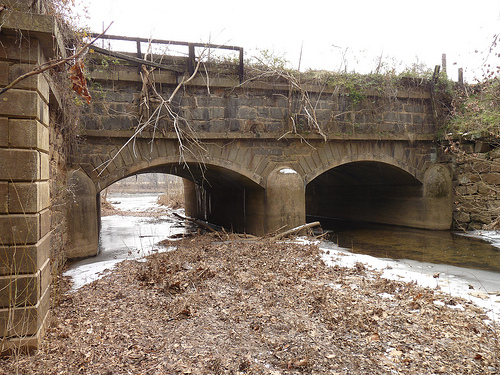
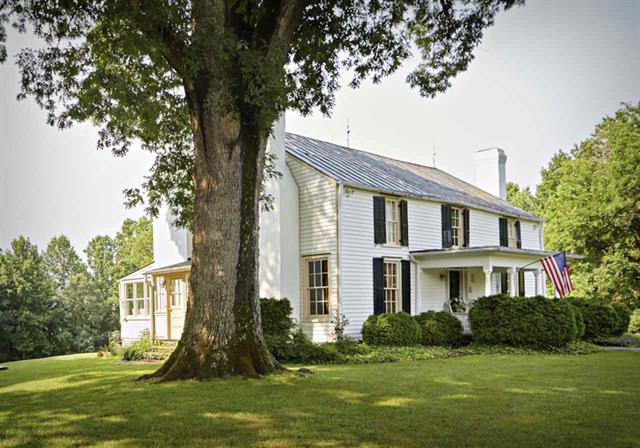
Oak Lawn
Oak Lawn, also known as Burford House, is located at Madison Heights near Lynchburg in Amherst County. The original section of the clapboard farmhouse was built about 1810 and later enlarged about 1859. It is a two-story, three-bay, frame dwelling with weatherboard siding and four exterior end chimneys. It has Federal and Greek Revival-style design elements. Also on the property is a late-19th century latticed well house. The house and gardens are situated on six acres of land and overlook Tobacco Row Mountain, an outlier of the Blue Ridge Mountains.
Don't Give up the Search for your Ancestors
The research required to find the ancestors can be daunting and satisfying. As we began the work, perhaps we thought it rather boring dealing with names, dates, and places. But it becomes more exciting as we locate old photographs and dig into the history during which our ancestors lived. That is when our relatives become real people. They were the ones who faced the hardships of their times and cleared away the obstacles. They plowed with a mule, drove a tractor, an automobile, an airplane, and then went to the moon. There is no reason to criticize those who fought for American freedom and prepared the way for us…for us, I say…they prepared it for us! They were the ones whose dreams and ideas of a better future have become a reality in this America. And, they were the forerunners of our generation today who now imagines the reality of going to Mars!

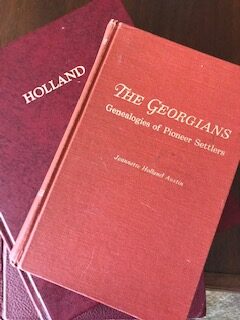
When the Heirs Appeal Inheritances
When an heir appeals for his inheritance, this means something to the genealogist who views it as clues and further evidence of relationships. When George Pleasants died in 1873, he owned a plantation of 465 acres of land whereon he raised cattle, horses, sheep, and hogs. Part of the acreage, however, 324 acres known as the Gibson tract, was bequeathed to his son, James to be used for the sole support of himself and his family. The other heirs apparently brought suit against the estate charging that the deceased was not of lucid mind when he died. Six years later, the Appellate Court found George Pleasants to be of sound mind. As the decision followed the last will and testament in the will book, it is presumed that there are no further records. However, to acquire further details, the genealogist must proceed to the probate court and research all possible avenues as a result of this appeal. During the 19th century, the Appellate Courts had the power to repeal decisions of the Circuit Court. The Court of Appeals system was not implemented until 1985.
